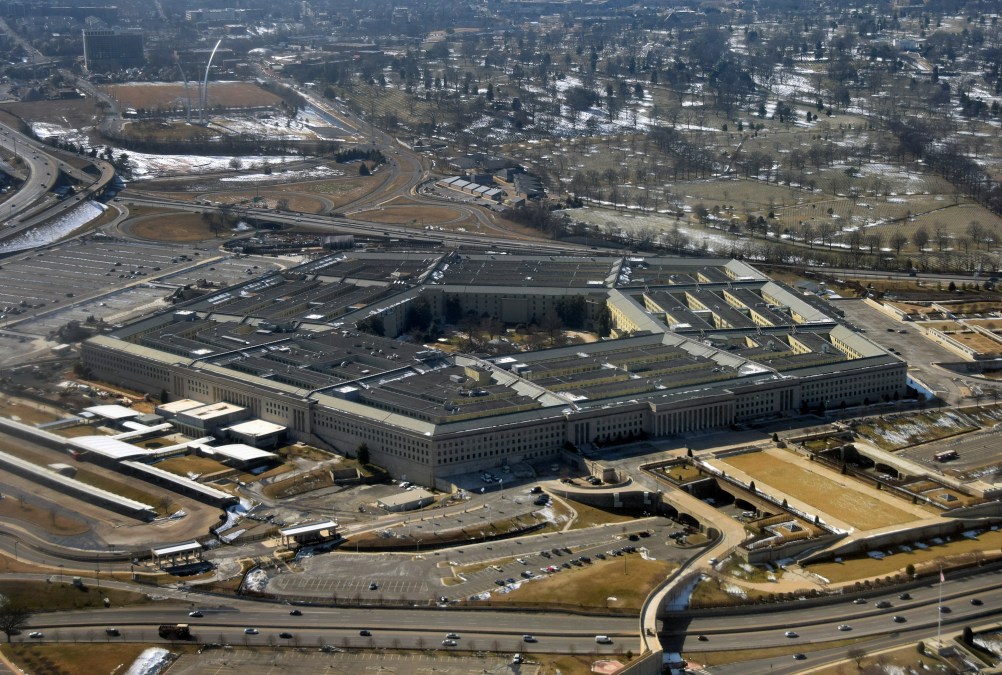Pentagon should have direct access to its systems’ source code, Defense Innovation Board says

The Defense Innovation Advisory Board has formally approved a list of recommendations for how to make the Pentagon more modern and innovative, including one idea that could change the military’s relationship with its IT contractors.
Among the 11 pieces of advice was a suggestion that the department improve DOD access to code, which could elicit resistance from contractors who want to retain exclusive rights to their own source code. In particular, the board recommended the Pentagon “require that all systems purpose-built for DoD should have their source code available to the Department,” according to a fact sheet of the recommendations provided to press.
“DoD should have the rights to and be able to modify the code when new conditions and features arise,” the fact sheet notes.
The recommendation underscores a pain point for the Pentagon when it wants to modify proprietary source code for its contracted IT systems. In those situations, the Pentagon has to ask contractors to make changes, rather than have its own personnel do so.
Other advice includes the recommendation to “embed computer science as a core competency of the department through recruiting and training,” according to the fact sheet.
As a part of that suggestion, the board said the DOD should “establish a career track for computer scientists in the military that will provide incentives for service members to specialize in computer science and programming fields.”
The need to recruit talented computer scientists, engineers and cybersecurity experts was a common refrain in the interim recommendations of the 15-member board released in October. At the time, the board notably pitched the idea of creating a “digital ROTC program” in which the department would pay for college students’ tuition in computer science fields in return for their eventual service.
[Read more: Board calls for Pentagon chief innovation officer position]
The board also said the secretary should appoint a chief innovation officer, which it also had suggested in the interim recommendations.
A chief innovation officer, the board believes, would provide the coordination to connect the innovative ideas hidden deep within the massive department.
“The idea here would be that there would be a resource, a sharing of ideas, and an effort to spread the best thinking from one part of the department to another,” said board member Cass Sunstein, a professor at Harvard Law School, in October.
Both the recommendation to make computer science a core competency and to appoint a senior Pentagon innovation official were accepted by Defense Secretary Ash Carter in October.
He said he would appoint a chief innovation officer, and the department would expand its computer science workforce through “targeted recruiting activities, from our reserve officer training corps to our civilian scholarship-for-service program that’s intended to help build the next generation of DoD science and technology leaders.”
[Read more: DOD adding a chief innovation officer]
On Monday the board also issued an interim recommendation to “establish [a] global and secure repository for data collection, sharing, and analysis.”
The platform would store all or most of DOD’s data, according to the fact sheet.
“As cyberwarfare and disruptive cyber activities emanating from an ever-widening host of adversaries become even more widespread and pernicious, data that is easily accessible and can be collected and used efficiently and comprehensively will be more important than ever,” the fact sheet notes.
The full list of recommendations, as noted in the Pentagon’s fact sheet, are here:
• Appoint a chief innovation officer and build innovation capacity in the workforce;
• Embed computer science as a core competency of the department through recruiting and training;
• Embrace a culture of experimentation;
• Assess cybersecurity vulnerabilities of advanced weapons;
• Catalyze innovations in artificial intelligence and machine learning;
• Expand use of available acquisition waivers and exemptions;
• Increase investment in new approaches to innovation;
• Improve DoD access to code;
• Establish software development teams at each major command;
• Make computing and bandwidth abundant;
• Reward bureaucracy busting and lower barriers to innovation
Contact Samantha via email at samantha.ehlinger@fedscoop.com, or follow her on Twitter at @samehlinger. Subscribe to the Daily Scoop for stories like this in your inbox every morning by signing up here: fdscp.com/sign-me-on.






